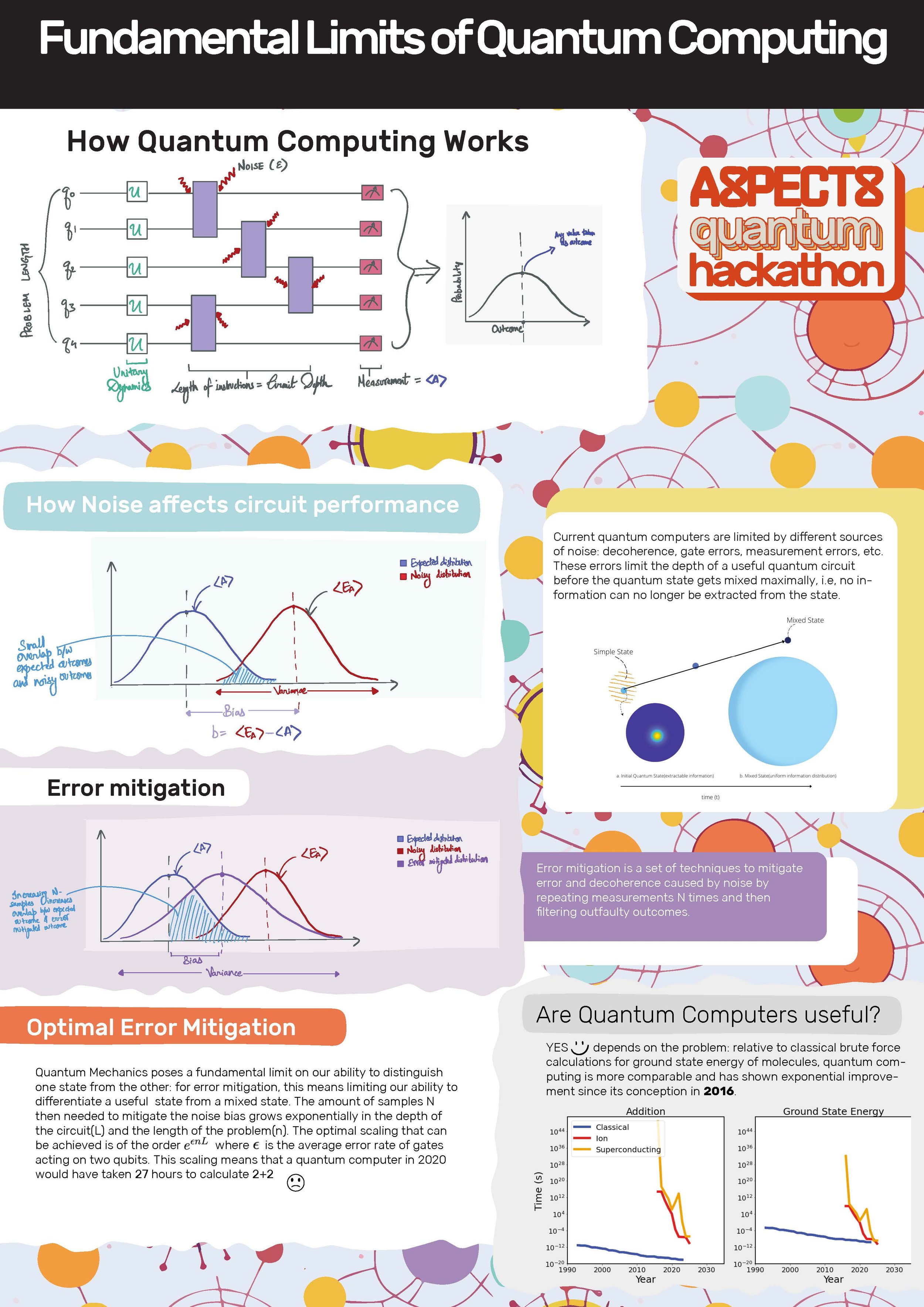
Quantum Darts
The game of darts is a great analogy for the idea of error mitigation in quantum computing. Let’s say that throwing a dart is like running a quantum algorithm, which is the name for an app or program that runs on a quantum computer. Each time you throw a dart, you try to hit the bullseye, but you won’t be successful every time: sometimes you miss the target due to errors. Your chances of hitting the target increase if you throw lots of darts.
The same happens for quantum computing: each run of the algorithm may have errors, leading to the wrong result. You can increase the chance of success by running the algorithm many times and averaging over the results in a clever way – this is the essence of error mitigation. However, for a quantum algorithm to be useful, it needs to be complex enough to solve a hard problem. Otherwise, a conventional computer would be able to solve the problem more quickly and cheaply. The complexity of a quantum algorithm is related to something called the circuit depth, which is the number of operations that must be performed sequentially (one after the other). Running an algorithm with high circuit depth is like throwing a dart at a dartboard that is really far away: the chance of missing the target is now much higher! A major challenge in current-day quantum computing research is to find quantum algorithms that solve hard problems but still have a low enough circuit depth that error mitigation (repeatedly throwing darts) can be used to get accurate results (hit the bullseye) without too many repetitions.








